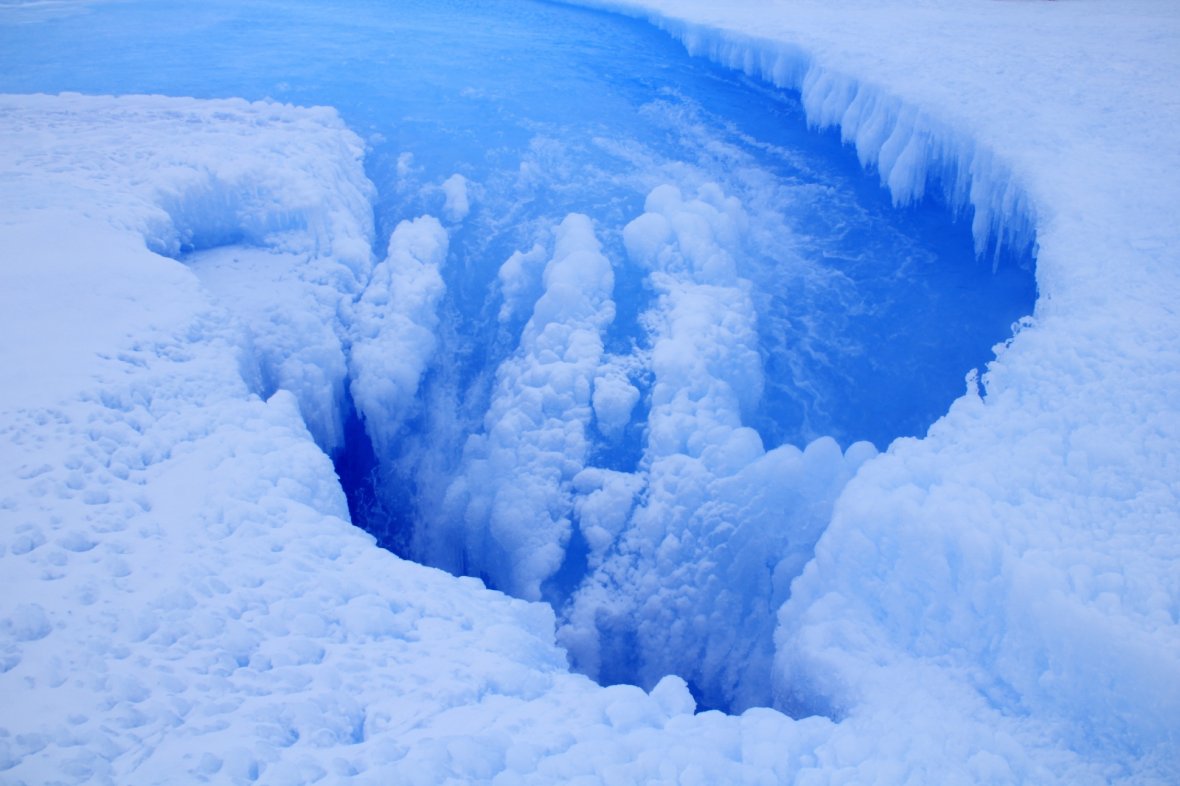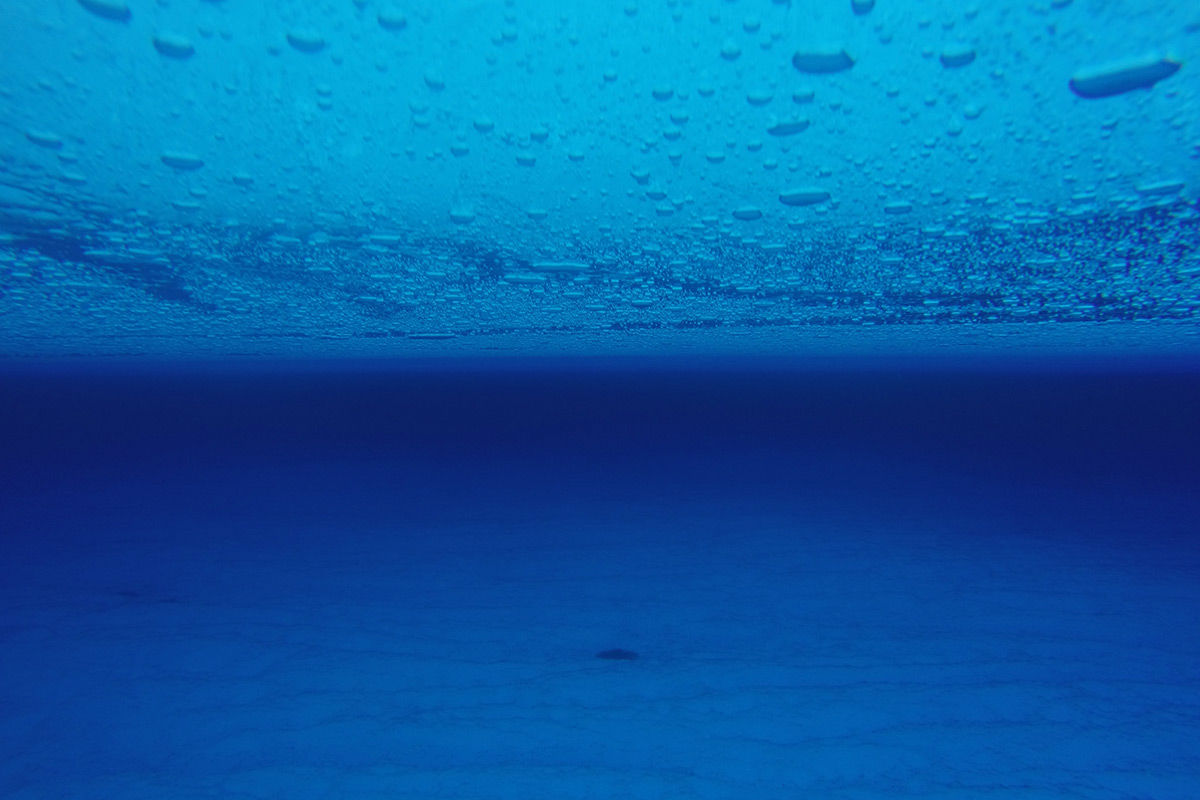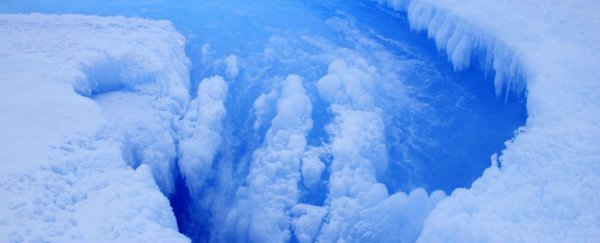Scientists have visited a vast, 2-kilometre-wide (1.2-mile) ice crater in East Antarctica for the first time, and after years of speculation, say they finally know how it got there.
Despite media reports suggesting that the crater was left behind by a meteorite strike, the team says the giant circle is the result of a meltwater lake collapsing under the surface - and it's a signal that the coldest place on Earth might be far less stable than we thought.
The crater in King Baudoin ice shelf of East Antarctica isn't new - it's been seen in satellite images since 1989 - but recent flybys brought it into the public consciousness when researchers suggested that it was left behind by a meteorite strike in 2004.
But a team from Utrecht University in the Netherlands, which happened to be analysing images of the crater at the time of the reports last year, wasn't so convinced.
"My response was: in that area?" says lead researcher Stef Lhermitte. "Then it's definitely not a meteorite; it's proof of strong melting."
Lhermitte and his team set out earlier to see this thing with their own eyes - no small feat, seeing as it's located 400 km away from the nearest research base.
After a three-day trip by snow mobile, they finally arrived, and it was the first time anyone had visited the crater in person.
What they saw confirmed their suspicions, but also their concerns for the stability of the East Antarctic ice sheet. Inside the vast crater they found a 3-metre-deep depression, and three moulins - vertical well-like shafts - in the centre, funnelling into two meltwater streams.
"Looking at the images we straight away thought that it would be a collapsed lake," Lhermitte told Martha Henriques at the International Business Times.
"Of course, then we had to find out, so we went there, and by being there it was overwhelmingly clear - because the running water that drains into the moulin - it's obvious that it's melting there."
 Moulin inside the crater: Sanne Bosteels
Moulin inside the crater: Sanne Bosteels
The problem is that moulins like these have never been seen in the East Antarctic ice sheet before.
"That was a huge surprise," Lhermitte said in a press statement. "Moulins typically are observed on Greenland. And we definitely never see them on an ice shelf."
Moulins have been proliferating in the melting ice sheets of Greenland in recent years, but it was thought that East Antarctica was far too cold to be melting in the same way.
So how did that crater get there? The researchers suspect that its formation was triggered by natural processes, but was made worse by the effects of a warming global climate.
They suggest that incredibly strong 'katabatic' winds originating at the centre of the ice sheet have been blowing towards the coasts at speeds of 35 km/hour, delivering warm, dry air to melt the surface ice and snow.
This exposed the dark, blue ice beneath - which absorbs the sunlight, rather than the surface snow, which reflects it - and a vast meltwater lake formed in the area, along with weak 'hotspots' that would eventually turn into moulins.
"The build-up of pressure on the lake, which will have become so big and full of water, caused it to drain or collapse under the surface," one of the team, Jan Lenaerts, told New Scientist.
"We have definitely proved that this is not a meteor site, but that this crater is the remnant of a surface, or subsurface, meltwater lake."
 Stef Lhermitte
Stef Lhermitte
When the researchers drilled down under the crater left behind by the collapsed lake, they found a number of submerged 'englacial' lakes, sitting between the surface of the ice shelf and its base.
This presented further evidence that the vast amounts of surface melting in the area had given rise to new lakes.
 One of the englacial lakes. Credit: Stef Lhermitte
One of the englacial lakes. Credit: Stef Lhermitte
Usually, the kind of erosion seen at the crater site would be mitigated by the accumulation of fresh surface snow and ice covering what's being exposed by the winds, but with increased global temperatures in recent years, that hasn't been the case.
While fracturing or collapsing of the ice shelf is not predicted any time soon, it's further evidence that East Antarctica might be the coldest place on Earth, but even it's more a risk than we could have imagined.
"Tens of metres of rising sea levels are locked away in Antarctica," Lenaerts says in a press statement. "And our research has shown that … East Antarctica is vulnerable to climate change."
The research has been published in Nature Climate Change.
